The Cyclades And Their Advanced And Mysterious Society Lost In Time
A. Sutherland - AncientPages.com - Prehistoric Cycladic figurines carved in marble are very ancient artifacts that appeared in the Cycladic society, many centuries before the arising of the famous Minoan Civilization.
Harp player, an example of Cycladic art, at the National Archeological Museum, Athens. Image credit: Robur.q - CC BY-SA 3.0
These earliest settlers probably cultivated barley and wheat and most likely fished the Aegean for tunny and other fish. They had also accomplished sculptors in stone, as attested by significant finds of marble figurines.
A number of them survived looting and vandalism of modern times but for example, on the island Keros, they were intentionally destroyed already during ancient times.
Had this kind of action anything to do with the religious beliefs of those who discovered them on Keros Island? As far as we know, the Cycladic people did not worship the Gods of Olympus that appeared first in the 2nd millennium BC.
Was Keros a major religious center of the enigmatic Cycladic civilization some 4,500 years ago?
What was their real meaning and purpose in the Cycladic society? How important were their enigmatic flat figurines?
As we see, there are a few interesting questions but answers to them are still missing.
Left: Seated figure, a man holding a cup, early works of the Spedos variety, marble, height 15 cm, origin is unknown. Cycladic Early Bronze Age, EC II, 2800-2300 BC. Probably the man, because it is displayed in the plot. Sitting on a stool from a single piece of marble, his right hand with a cup about preparing to tribute or libation. Goulandris Foundation Museum of Cycladic Art (Athens) NG 286.;
Right: Seated figure, a man holding a cup, early works of the Spedos variety, marble, height 15 cm, origin is unknown. Cycladic Early Bronze Age, EC II, 2800-2300 BC. Probably the man, because it is displayed in the plot. Sitting on a stool from a single piece of marble, his right hand with a cup about preparing to tribute or libation. Goulandris Foundation Museum of Cycladic Art, Athens. Goulandris
Foundation Museum of Cycladic Art (Athens) NG 286. Image credit: Zde - CC BY-SA 3.0
The Cycladic Culture refers to the ancestral Greek culture of the Cycladic islands of the southern Aegean Sea, including the Neolithic (5200-3200 BC) and Early Bronze (3200-2100 BC) ages. The Cycladic culture includes the Minoan civilization.
A very advanced civilization flourished there between 3200 BC - 2000 BC and many crucial discoveries have been made on these ancient islands.
Plenty of curious artifacts - inspired by this unknown civilization - have been found on the islands but certainly, one of the most distinguishing creations of this civilization was the so-called Cycladic figurines. Their enigmatic forms possess great aesthetic power in their very simplicity.
The majority of the figures depict women.
Scientists are now researching a number of important questions regarding the unknown past of the Cycladic Islands. Among them, there is one, particularly important: why did the Cycladic Culture produce history’s largest collection of Cycladic flat-faced marble figurines?
The Cyclades is a group of approximately 220 islands located south-east of the mainland of Greece, with famous names as Santorini (Thira), Tinos, Naxos, Paros, Milos, Mykonos, Ios, and Andros.
The name “Cyclades” refers to the islands forming a circle (the name in English means: “circular islands”). These islands surround the sacred island of Delos. In Greek mythology, the god of the sea, Poseidon, was furious at the Cyclade's nymphs and turned them into islands.
The name 'Cyclades' is related to Herodotus, Thucydides, and several other ancient authors.
Akrotiri ruins - settlement's ruins. A center of Cycladic culture. Akrotiri was a Cycladic Bronze Age settlement on the volcanic Greek island of Santorini, 5,000 years before Christ. The settlement was destroyed in the Theran eruption sometime in the 16th century BC and buried in volcanic ash. Image credit: Rt44 - CC BY-SA 4.0
According to Strabo (ca. 64 B.C.-ca. A.D. 23), a Greek geographer and historian, the Cyclades formed a circle around the sacred island of Delos. We should remember, however, that the earliest recorded use of the term Cyclades dates to the 5th c. BC. Whether the 3rd millennium BC inhabitants of the Cyclades used the same or similar names for their islands is unknown.
The famous greek archeologist, Christos Tsountas (1857–1934) started his research of the mysterious Cycladic civilization in 1898 and 1899 and investigated burial sites on several islands of the Cyclades.
The Cycladic figurines made of marble originated from the best quarries in Naxos and Paros but for some millennia they have remained anonymous. It is still very little known about the mysterious Cycladic masters who created them.
Archaeologists have difficulties tracing the origins of pre-Greek civilization due to numerous and complex layers of ruins.
The Cyclades, a group of islands in southwestern Aegean, comprises some thirty small islands and numerous islets. The ancient Greeks called them kyklades, imagining them as a circle (kyklos) around the sacred island of Delos, the site of the holiest sanctuary to Apollo.
Left: Feminine figure-Ma 5010. Collection: Louvre Museum; Artist: Goulandris Master Image credit: Rama - CC BY-SA 3.0 FR; Right: Showcase idols and vessels. EC II. From the Spedos cemetery on Naxos. National Archaeological Museum in Athens. Image credit: Zde - CC BY-SA 3.0
Many of these islands are particularly rich in mineral resources—iron ores, copper, lead ores, gold, silver, emery, obsidian, and marble, the marble of Paros and Naxos among the finest in the world.
Archaeological evidence points to sporadic Neolithic settlements on Antiparos, Melos, Mykonos, Naxos, and other Cycladic Islands at least as early as the sixth millennium B.C.
In the third millennium B.C., a distinctive civilization, commonly called the Early Cycladic culture (ca. 3200–2300 B.C.), emerged with important settlement sites on Keros and at Halandriani on Syros. At this time in the Early Bronze Age, metallurgy developed at a fast pace in the Mediterranean. It was especially fortuitous for the Early Cycladic culture that their islands were rich in iron ores and copper, and that they offered a favorable route across the Aegean.
Inhabitants turned to fishing, shipbuilding, and exporting of their mineral resources, as trade flourished between the Cyclades, Minoan Crete, Helladic Greece, and the coast of Asia Minor.
The mystery of the Cycladic Culture is still unsolved.
The first version of this article was originally published on April 12, 2014
Written by – A. Sutherland AncientPages.com Staff Writer
Copyright © AncientPages.com All rights reserved. This material may not be published, broadcast, rewritten or redistributed in whole or part without the express written permission of AncientPages.com
Expand for referencesReferences:
More From Ancient Pages
-
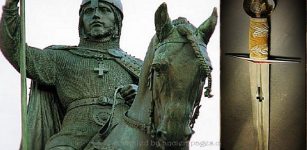 Prince Wenceslaus Of Bohemia Murdered On Order Of His Own Brother
Featured Stories | Nov 19, 2019
Prince Wenceslaus Of Bohemia Murdered On Order Of His Own Brother
Featured Stories | Nov 19, 2019 -
 Mjölnir: Thor’s Terrible Axe-Hammer And Its Magical Powers In Norse Mythology
Featured Stories | Apr 20, 2017
Mjölnir: Thor’s Terrible Axe-Hammer And Its Magical Powers In Norse Mythology
Featured Stories | Apr 20, 2017 -
 Shinobi No Mono: The Shadow Warriors And Hattori ‘The Demon’ Hanzo Of Ancient Japan
Featured Stories | Apr 8, 2016
Shinobi No Mono: The Shadow Warriors And Hattori ‘The Demon’ Hanzo Of Ancient Japan
Featured Stories | Apr 8, 2016 -
 Raven Mocker And Cannibal Body Snatchers In Cherokee Mythology
Featured Stories | Jun 13, 2019
Raven Mocker And Cannibal Body Snatchers In Cherokee Mythology
Featured Stories | Jun 13, 2019 -
 Ancient History Of Body Modification In Mesoamerica Practiced By The Aztecs, Maya And Olmecs
Ancient Traditions And Customs | Jul 12, 2017
Ancient History Of Body Modification In Mesoamerica Practiced By The Aztecs, Maya And Olmecs
Ancient Traditions And Customs | Jul 12, 2017 -
 What Is The Meaning Of Ankh – Ancient Egyptian Symbol
Ancient Symbols | Sep 21, 2023
What Is The Meaning Of Ankh – Ancient Egyptian Symbol
Ancient Symbols | Sep 21, 2023 -
 The Battle Of Anghiari – Lost Painting Of Leonardo Da Vinci – One Of Art History’s Greatest Mysteries
Artifacts | Jan 24, 2018
The Battle Of Anghiari – Lost Painting Of Leonardo Da Vinci – One Of Art History’s Greatest Mysteries
Artifacts | Jan 24, 2018 -
 How Did 20th-Century Philosophers Explain Ghosts And Other Spooky Subjects?
Featured Stories | Nov 8, 2024
How Did 20th-Century Philosophers Explain Ghosts And Other Spooky Subjects?
Featured Stories | Nov 8, 2024 -
 Mystery Of The Ancient Double-Headed Eagle Symbol
Ancient Symbols | Oct 11, 2017
Mystery Of The Ancient Double-Headed Eagle Symbol
Ancient Symbols | Oct 11, 2017 -
 Ancient Secrets Of The Nine Unknown Men: Guardians Of Forbidden Knowledge Hidden From Humanity
Ancient Mysteries | Aug 28, 2014
Ancient Secrets Of The Nine Unknown Men: Guardians Of Forbidden Knowledge Hidden From Humanity
Ancient Mysteries | Aug 28, 2014 -
 Lao Tzu: Legendary Thinker And Founder Of Taoism Who Advocated Modesty, Self-Restraint And Balance
Chinese Mythology | Jul 13, 2019
Lao Tzu: Legendary Thinker And Founder Of Taoism Who Advocated Modesty, Self-Restraint And Balance
Chinese Mythology | Jul 13, 2019 -
 Strange Case Of The ‘Impossible’ Glove Remains Unexplained – The Investigation – Part 2
Featured Stories | May 28, 2019
Strange Case Of The ‘Impossible’ Glove Remains Unexplained – The Investigation – Part 2
Featured Stories | May 28, 2019 -
 Ancient Artifacts With Foreign Inscriptions And Unknown Signs Discovered In The American Southwest Reveal An Epic Story
Featured Stories | Jul 11, 2024
Ancient Artifacts With Foreign Inscriptions And Unknown Signs Discovered In The American Southwest Reveal An Epic Story
Featured Stories | Jul 11, 2024 -
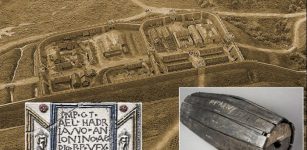 Antonine Wall: Impressive Roman Frontier Built By Empire’s Three Legions In Scotland
Civilizations | Jan 18, 2018
Antonine Wall: Impressive Roman Frontier Built By Empire’s Three Legions In Scotland
Civilizations | Jan 18, 2018 -
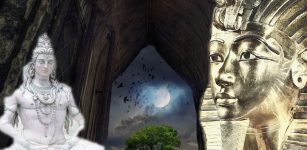 Axis Mundi That Symbolizes Separation Of The Earth From The Heaven
Featured Stories | Jul 2, 2018
Axis Mundi That Symbolizes Separation Of The Earth From The Heaven
Featured Stories | Jul 2, 2018 -
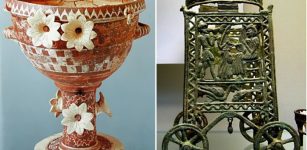 Minoans: Highly Advanced Bronze Age Civilization Of Europe
Featured Stories | Sep 23, 2023
Minoans: Highly Advanced Bronze Age Civilization Of Europe
Featured Stories | Sep 23, 2023 -
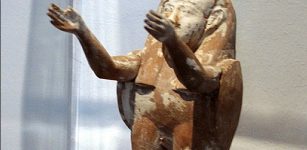 Ancient Beliefs About The Soul
Civilizations | Mar 8, 2016
Ancient Beliefs About The Soul
Civilizations | Mar 8, 2016 -
 Jeanne de Clisson ‘Lioness Of Bretagne’: Her Black Painted Ships With Red Sails Terrorized English Channel
Featured Stories | Oct 4, 2019
Jeanne de Clisson ‘Lioness Of Bretagne’: Her Black Painted Ships With Red Sails Terrorized English Channel
Featured Stories | Oct 4, 2019 -
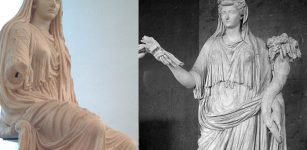 World’s First Diva Was Livia – Wife Of Emperor Augustus
Ancient History Facts | Aug 2, 2016
World’s First Diva Was Livia – Wife Of Emperor Augustus
Ancient History Facts | Aug 2, 2016 -
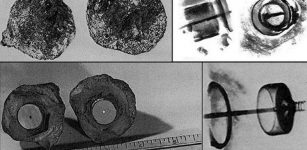 Mystery Of The Coso Artifact: A Spark Plug Or A Genuine Example Of Advanced Antediluvian Technology?
Ancient Technology | Sep 9, 2014
Mystery Of The Coso Artifact: A Spark Plug Or A Genuine Example Of Advanced Antediluvian Technology?
Ancient Technology | Sep 9, 2014





